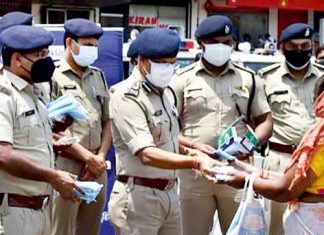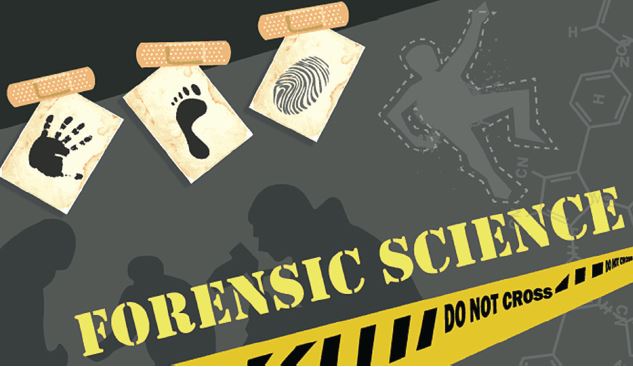 While watching a movie or analysis of a crime, we often hear statements like ‘a forensics team of experts are working on the crime scene’ or ‘the police is waiting for reports from the forensics team for further investigation’, but their role in crime detection is not clear to most of us. This article is an attempt to shed light on Forensic Science and its role in crime detection and solution.
While watching a movie or analysis of a crime, we often hear statements like ‘a forensics team of experts are working on the crime scene’ or ‘the police is waiting for reports from the forensics team for further investigation’, but their role in crime detection is not clear to most of us. This article is an attempt to shed light on Forensic Science and its role in crime detection and solution.
What is Forensic Science?
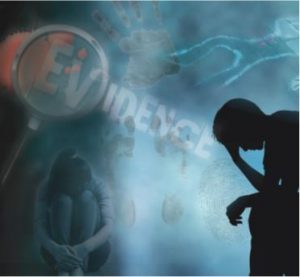 An introduction of Forensic Science defines it as, “the application of science to those criminal and civil laws that are enforced by police agencies in a criminal justice system”. Forensic Science deals with the application of the knowledge and methodology of various disciplines of science to legal matters. It involves the use of multiple disciplines such as physics, chemistry, biology, computer science and engineering for evidence analysis. For instance, physics is used to understand the pattern of a blood spatter, biology to establish the source of an unidentified suspect, and chemistry to determine the composition of drugs. Thus, the role of forensic science in criminal justice and the legal system is highly critical, but often underrated.
An introduction of Forensic Science defines it as, “the application of science to those criminal and civil laws that are enforced by police agencies in a criminal justice system”. Forensic Science deals with the application of the knowledge and methodology of various disciplines of science to legal matters. It involves the use of multiple disciplines such as physics, chemistry, biology, computer science and engineering for evidence analysis. For instance, physics is used to understand the pattern of a blood spatter, biology to establish the source of an unidentified suspect, and chemistry to determine the composition of drugs. Thus, the role of forensic science in criminal justice and the legal system is highly critical, but often underrated.
Scope of Forensic Science Forensic Biology/DNA
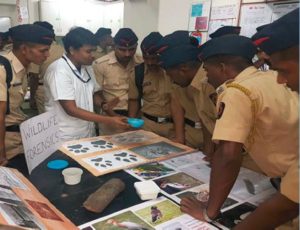 Fingerprint analysis and DNA profiling are the commonly used forensic techniques in criminal investigations. DNA is unique to an individual, just as fingerprints, and helps forensic professionals in identifying an unidentified person, or to eliminate suspects from a list of accused. The biological evidence most commonly used for DNA profiling includes blood, saliva, semen, skin, urine and hair. However, DNA fingerprints are usually never used as a single piece of evidence in the court of law.
Fingerprint analysis and DNA profiling are the commonly used forensic techniques in criminal investigations. DNA is unique to an individual, just as fingerprints, and helps forensic professionals in identifying an unidentified person, or to eliminate suspects from a list of accused. The biological evidence most commonly used for DNA profiling includes blood, saliva, semen, skin, urine and hair. However, DNA fingerprints are usually never used as a single piece of evidence in the court of law.
Forensic Odontology
 Forensic Odontology helps in the identification of victims when the body is left in an unrecognizable state. This is achieved through an examination of their teeth, the alignment, and overall structure of the mouth. Forensic dentists or odontologists aid in the comparative identification of a person by examining the development and anatomy of the teeth, including any restorative dental corrections such as filling. It is often applied to criminal investigations for bite mark analysis.
Forensic Odontology helps in the identification of victims when the body is left in an unrecognizable state. This is achieved through an examination of their teeth, the alignment, and overall structure of the mouth. Forensic dentists or odontologists aid in the comparative identification of a person by examining the development and anatomy of the teeth, including any restorative dental corrections such as filling. It is often applied to criminal investigations for bite mark analysis.
Controlled Substances
 Chemicals that are legally recognized as having the potential for abuse are called controlled substances. This includes street drugs such as ecstasy or heroin, and prescription drugs such as oxycodone. The ability to detect and identify such controlled substances plays a crucial role in aiding law enforcement agencies in their fight against drug abuse and drug-based violence.
Chemicals that are legally recognized as having the potential for abuse are called controlled substances. This includes street drugs such as ecstasy or heroin, and prescription drugs such as oxycodone. The ability to detect and identify such controlled substances plays a crucial role in aiding law enforcement agencies in their fight against drug abuse and drug-based violence.
Forensic Toxicology
 Forensic Toxicology involves analysis of biological samples to check for the presence of toxins and drugs. This branch of forensic science is of prime importance in road accidents, poisoning, sexual violence etc. The toxicology reports furnish key information about the nature of substances present in an individual pertaining to an incidence. It also determines whether the quantity of substances consumed is normal as per therapeutic dosage or exceeds the permissible level. Since new variants of drugs are developed each day, this branch of forensic science is ever-evolving and demands up-to-date approach.
Forensic Toxicology involves analysis of biological samples to check for the presence of toxins and drugs. This branch of forensic science is of prime importance in road accidents, poisoning, sexual violence etc. The toxicology reports furnish key information about the nature of substances present in an individual pertaining to an incidence. It also determines whether the quantity of substances consumed is normal as per therapeutic dosage or exceeds the permissible level. Since new variants of drugs are developed each day, this branch of forensic science is ever-evolving and demands up-to-date approach.
Forensic Anthropology
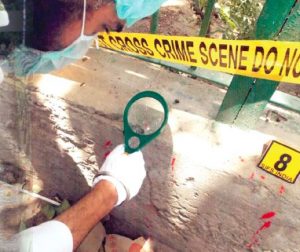 It deals with the examination of compromised human remains or skeletons to determine the age, height, gender and ancestry. It also helps in establishing the time elapsed since the time of death by identification and examination of injuries, if any. The analysis provides valuable leads on identifying victims, especially in cases where the bodies are beyond recognition.
It deals with the examination of compromised human remains or skeletons to determine the age, height, gender and ancestry. It also helps in establishing the time elapsed since the time of death by identification and examination of injuries, if any. The analysis provides valuable leads on identifying victims, especially in cases where the bodies are beyond recognition.
Forensic Pathology and Medicolegal Death Investigation
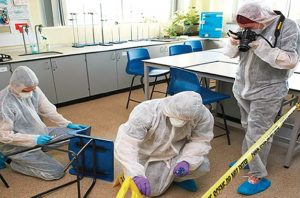 Forensic pathology helps in determination of the cause of death by examining the corpse. Forensic medicine involves collection and analysis of medical samples to deduce facts admissible in the court of law. For instance, identification of wound patterns can help determine the weapons used to inflict the wound. Additionally, forensic pathologists can examine exit and entry wounds in deaths pertaining to the use of firearms or other projectiles. A forensic pathologist can, therefore, draw crucial inferences on whether the death is natural, criminal or accidental.
Forensic pathology helps in determination of the cause of death by examining the corpse. Forensic medicine involves collection and analysis of medical samples to deduce facts admissible in the court of law. For instance, identification of wound patterns can help determine the weapons used to inflict the wound. Additionally, forensic pathologists can examine exit and entry wounds in deaths pertaining to the use of firearms or other projectiles. A forensic pathologist can, therefore, draw crucial inferences on whether the death is natural, criminal or accidental.
Impression and Pattern Evidence
 Impression evidence is the evidence created when two objects come in contact with enough force to create an “impression”. This could involve a two-dimensional impression such as a fingerprint or three-dimensional one such as the marks of a bullet. Pattern evidence analysis involves identification and analysis of additional information within an impression. Impression and pattern evidence, when used in conjunction, can help in establishing vital links between a suspect/tool to a crime scene.
Impression evidence is the evidence created when two objects come in contact with enough force to create an “impression”. This could involve a two-dimensional impression such as a fingerprint or three-dimensional one such as the marks of a bullet. Pattern evidence analysis involves identification and analysis of additional information within an impression. Impression and pattern evidence, when used in conjunction, can help in establishing vital links between a suspect/tool to a crime scene.
Trace Evidence
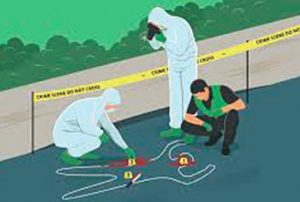 Evidences such as fibers, soil, hair, gunshot residue, wood, and pollen are some of the many examples of trace evidence. It derives its name from its tendency to be easily transferrable between objects, people or the environment during a crime. Trace evidence often plays a pivotal role in establishing the link between the suspect and the victim. For instance, a soil sample obtained from the shoes of a victim can give critical clues on the location of the crime, thus helping in tracing the perpetrator.
Evidences such as fibers, soil, hair, gunshot residue, wood, and pollen are some of the many examples of trace evidence. It derives its name from its tendency to be easily transferrable between objects, people or the environment during a crime. Trace evidence often plays a pivotal role in establishing the link between the suspect and the victim. For instance, a soil sample obtained from the shoes of a victim can give critical clues on the location of the crime, thus helping in tracing the perpetrator.
Cyber Forensics
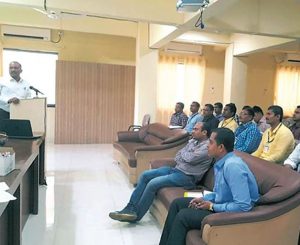 Cyber Forensics involves the analysis of evidence found in computers and digital storage media like pen drives, hard disks etc. Its major objective is identifying, preserving, recovering, analyzing, and presenting facts and opinions about digital information. It is mostly used for the investigation of cyber crimes, and civil proceedings.
Cyber Forensics involves the analysis of evidence found in computers and digital storage media like pen drives, hard disks etc. Its major objective is identifying, preserving, recovering, analyzing, and presenting facts and opinions about digital information. It is mostly used for the investigation of cyber crimes, and civil proceedings.
Cyber Forensics has been in use in criminal law since the mid-1980s; some notable cases being the Sharon Lopatka homicide case and the conviction of Dennis Rader, Dr. Conrad Murray – Michael Jackson’s personal physician, and Joseph E. Duncan III.
Ballistics
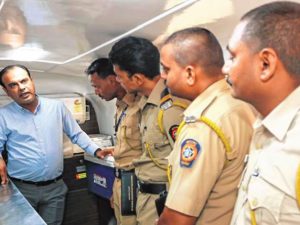 Ballistics is a specialized forensic science that deals with the motion, behavior, dynamics, angular movement and effects of projectiles, such as bullets, rockets, missiles, bombs etc. Ballistics is mainly used in criminal investigations. For instance, the examination of the bullet found at a crime scene can reveal the type of gun that was used to fire it, and if it was associated with any other crime in the past. In fact, ballistic details are documented in a large database that is accessible by law enforcement agencies across the globe.
Ballistics is a specialized forensic science that deals with the motion, behavior, dynamics, angular movement and effects of projectiles, such as bullets, rockets, missiles, bombs etc. Ballistics is mainly used in criminal investigations. For instance, the examination of the bullet found at a crime scene can reveal the type of gun that was used to fire it, and if it was associated with any other crime in the past. In fact, ballistic details are documented in a large database that is accessible by law enforcement agencies across the globe.
 Stalwarts in the History of Forensic Science
Stalwarts in the History of Forensic Science
Mathieu Orfila (1787-1853): Known as the Father of Toxicology.
Alphonse Bertillon (1853–1914): Established the first scientific system of personal identification through a series of body measurements. It was later replaced by fingerprints in the early 1900s.
Francis Galton (1833–1911): First to study fingerprints and classify them for filing.
Leone Lattes (1887–1954): Discovered that blood can be categorized into four groups.
Calvin Goddard (1891–1955): Determined the comparison of bullets in guns – Ballistics.
Albert S. Osborn (1858–1946): Developed principles of document examination.
Walter C. McCrone (1916–2002): Developed advances in microscopic techniques to solve crimes and analyze evidence.
Hans Gross (1847–1915): Studied and developed principles of criminal investigation.
Edmond Locard (1877–1966): Hada background in medicine and law, and was the first one to use scientific methods for criminal investigation.
Role of Forensic Science in Criminal Investigations:
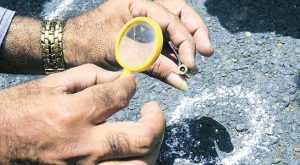 Forensic science is that piece without which the puzzle of a criminal investigation is incomplete. Without the application of forensic science, criminals can never be convicted unless an eyewitness is present. While detectives and law enforcement agencies are involved in the collection of evidence, be it physical or digital, it is forensic science that deals with the analysis of those evidences in order to establish facts admissible in the court of law. Thus, in a world devoid of forensic science, murderers, thieves, drug traffickers and rapists would be roaming scot-free.
Forensic science is that piece without which the puzzle of a criminal investigation is incomplete. Without the application of forensic science, criminals can never be convicted unless an eyewitness is present. While detectives and law enforcement agencies are involved in the collection of evidence, be it physical or digital, it is forensic science that deals with the analysis of those evidences in order to establish facts admissible in the court of law. Thus, in a world devoid of forensic science, murderers, thieves, drug traffickers and rapists would be roaming scot-free.
The duties and responsibilities of a forensic scientist in a criminal investigation is crucial as it involves careful examination of evidence with due care so that it is not tampered with. A diverse pool of forensic scientists and forensic tools are involved in the investigation of a criminal act.
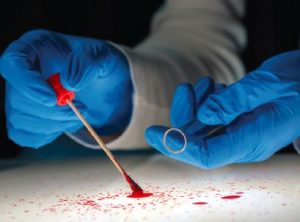 For instance, forensic pathologists are skilled at determining the cause of death by performing autopsies. An autopsy helps in establishing the cause and manner of death through the examination of body fluids and tissues. Forensic scientists analyze physical evidence (fingerprints, blood, hair etc.) collected from the crime scene to identify suspects. Forensic professionals also use image modification tools to search for criminals absconding from the law for a long time. This tool enables them to digitally age a photograph to understand how the individual would look on ageing.
For instance, forensic pathologists are skilled at determining the cause of death by performing autopsies. An autopsy helps in establishing the cause and manner of death through the examination of body fluids and tissues. Forensic scientists analyze physical evidence (fingerprints, blood, hair etc.) collected from the crime scene to identify suspects. Forensic professionals also use image modification tools to search for criminals absconding from the law for a long time. This tool enables them to digitally age a photograph to understand how the individual would look on ageing.
Criminal Profiling –Getting inside a criminal’s mind
 Criminal profiling has been generally used in popular television series such as Criminal Minds, Law & Order, Profiler, and the film- The Silence of the Lambs. Criminal profiling dates back to 1888, and is believed to have been originally used and adapted by the FBI. It enables forensic scientists to zero down on suspects by determining a criminal’s mindset and personality. It is based on a psychological evaluation of the belongings seized from an offender.
Criminal profiling has been generally used in popular television series such as Criminal Minds, Law & Order, Profiler, and the film- The Silence of the Lambs. Criminal profiling dates back to 1888, and is believed to have been originally used and adapted by the FBI. It enables forensic scientists to zero down on suspects by determining a criminal’s mindset and personality. It is based on a psychological evaluation of the belongings seized from an offender.
It helps in drawing a complete social and psychological assessment of the offender. Though it is often questioned for its accuracy, effectiveness and scientific validity, its role in criminal investigation cannot be ignored.
The basic steps of criminal profiling include in-depth analysis of the crime scene, analyzing the incidence and drawing comparisons with similar events in the past, evaluation of the victim’s background and activities; considering all possible motives, and preparing a detailed description of the suspects in order to compare it with previous cases.
Importance of Forensic Science in Law
 The word ‘forensic’ has its roots in the Latin word, ‘forenses’, which means ‘a forum’. Back in early Rome, a forum referred to a public place where judicial proceedings and debates were held. Thus, the origin and the very definition of ‘forensic science’ points to its close association with the legal system. Forensic science involves the collection, preservation, and analysis of evidence suitable for prosecuting an offender in the court of law. The application of forensic science in the criminal justice system therefore, gives a clear picture.
The word ‘forensic’ has its roots in the Latin word, ‘forenses’, which means ‘a forum’. Back in early Rome, a forum referred to a public place where judicial proceedings and debates were held. Thus, the origin and the very definition of ‘forensic science’ points to its close association with the legal system. Forensic science involves the collection, preservation, and analysis of evidence suitable for prosecuting an offender in the court of law. The application of forensic science in the criminal justice system therefore, gives a clear picture.
The legal system widely recognizes the role of forensic evidence in the trial of criminal offenders. This is because when scientific techniques and methods are used, there is not much scope for bias or injustice. That is why DNA profiling and a host of other forensic evidences are widely accepted in courts across the world. Interestingly, the first forensic technique ever used involving finger and palm print identification dates back to the Chinese (650 A.D.).
Forensic evidence is extensively used worldwide to both convict and exonerate defendants. Thus, forensic science laboratories have mushroomed all over the globe inthe past couple of decades. In fact, special Acts have been enacted in the US, Canada, and Australia to improve the rendering of forensic services. This ensures that crimes are detected with greater certainty, and consequently, conviction rates can increase. Such Acts place a great emphasis on time-efficient and quality management of crime scene.
Incognito Forensic Foundation (IFF Lab)
 In India, the first official forensic science laboratory was established in 1878. Over the years, there has been a notable rise in the number of forensic and crime laboratories in the country. This increase can be attributed to the rising importance of forensic science in criminal justice and the ever-growing forensic disciplines.
In India, the first official forensic science laboratory was established in 1878. Over the years, there has been a notable rise in the number of forensic and crime laboratories in the country. This increase can be attributed to the rising importance of forensic science in criminal justice and the ever-growing forensic disciplines.
However, with millions of cases still pending in courts across India, the need for more forensic labs and qualified forensic professionals is very high. Also, there is a mounting pressure on law enforcement agencies to collect evidence in a tamper-proof way. Though India currently has more than 5000 forensic experts, government forensic labs often take months to deliver reports. Hence, justice is often imparted too late to the victim.
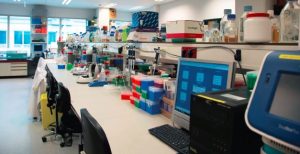 Incognito Forensic Foundation (IFF Lab) is a private forensic lab based in Chennai and Bangalore. It has already emerged as a frontrunner despite being very new in the forensic domain. With expertise in criminal investigations, cyber and digital forensics, they are indeed a valuable addition to the country’s forensic domain. Their futuristic cybercrime and digital forensic centre offer solutions catering to different segments of the society, such as law enforcement agencies, private investigators, individuals, corporates and the government. IFF Lab also caters to hesitant individuals who wish to resolve family disputes but are reluctant to approach the police. Thus IFF Lab is particularly helpful for corporates and individuals who wish to keep disputable matter confidential, fearing disrepute. Such cases involve fraudulent documents, identity theft, corporate frauds, paternity disputes, cyber crimes and matrimonial scams, etc.
Incognito Forensic Foundation (IFF Lab) is a private forensic lab based in Chennai and Bangalore. It has already emerged as a frontrunner despite being very new in the forensic domain. With expertise in criminal investigations, cyber and digital forensics, they are indeed a valuable addition to the country’s forensic domain. Their futuristic cybercrime and digital forensic centre offer solutions catering to different segments of the society, such as law enforcement agencies, private investigators, individuals, corporates and the government. IFF Lab also caters to hesitant individuals who wish to resolve family disputes but are reluctant to approach the police. Thus IFF Lab is particularly helpful for corporates and individuals who wish to keep disputable matter confidential, fearing disrepute. Such cases involve fraudulent documents, identity theft, corporate frauds, paternity disputes, cyber crimes and matrimonial scams, etc.




